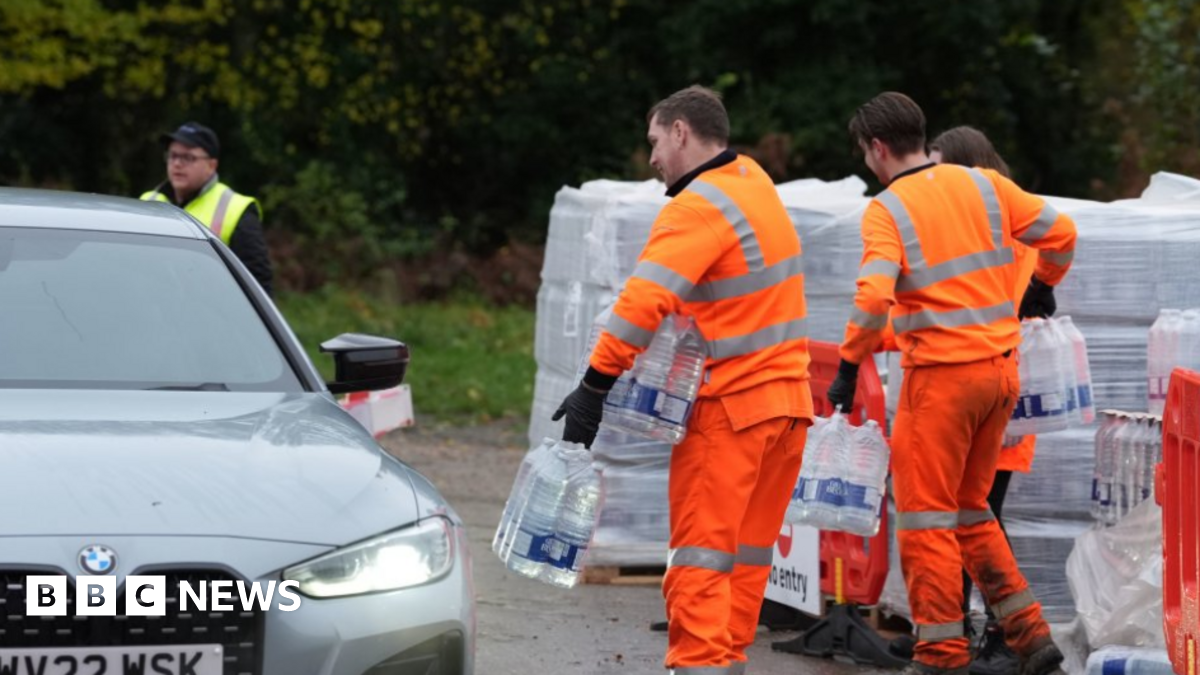Experts, students discuss India’s river future, freshwater ecosystems – The Statesman

Workshop on River Health and Sustainability Aligns with Sustainable Development Goals
Introduction and Strategic Alignment with SDGs
A workshop was convened at Raja Narendralal Khan Women’s College to address the deteriorating condition of India’s freshwater ecosystems, directly supporting several United Nations Sustainable Development Goals (SDGs). The event, organized under the Scientific Social Responsibility (SSR) component of a central government project, focused on the critical need for integrated scientific, ecological, and community-based approaches to river conservation. The initiative underscores a commitment to achieving key environmental and social targets.
- SDG 6 (Clean Water and Sanitation): The workshop’s core theme was the protection and restoration of water-related ecosystems, aligning with Target 6.6.
- SDG 14 (Life Below Water) & SDG 15 (Life on Land): By focusing on river health, pollution mitigation, and ecological monitoring, the program directly contributes to the conservation of freshwater biodiversity and ecosystems.
Key Objectives and Educational Contributions (SDG 4)
The workshop served as a vital educational platform, advancing SDG 4 (Quality Education) by providing specialized knowledge for sustainable development. Approximately one hundred postgraduate students from geography and zoology departments participated, gaining practical insights into river assessment and management. College Principal Dr. Swapna Ghorai emphasized the importance of experiential learning, urging students to become active agents in environmental stewardship. This approach fosters the knowledge and skills needed to promote sustainable development as outlined in SDG Target 4.7.
Expert Contributions to Integrated Water Resource Management (SDG 6 & SDG 15)
Technical sessions provided expert analysis on sustainable water management, crucial for implementing SDG 6 and SDG 15. The discussions highlighted the necessity of integrated and scientifically-informed strategies for river basin management.
- Dr. Biswajit Bera discussed river morphology and the negative impacts of channelization, advocating for integrated river basin management to prevent environmental degradation and support the sustainable management of freshwater ecosystems (Target 15.1).
- Dr. Priyank Pravin Patel detailed scientific tools for assessing river health, including ecological indicators and bio-assessment techniques. This focus on scientific monitoring is essential for protecting and restoring water-related ecosystems (Target 6.6).
- Tapas Das, a social worker, addressed the human dimensions of conservation, stressing that policy reforms and grassroots activism are required to translate scientific knowledge into effective action, thereby supporting community-level implementation of water management strategies (Target 6.b).
Fostering Community Engagement and Gender Equality (SDG 5 & SDG 11)
The workshop strongly promoted community involvement as a cornerstone of sustainable river management, aligning with SDG 11 (Sustainable Cities and Communities). A key proposal was the mobilization of 50 trained women volunteers for regular monitoring of local rivers. This initiative not only strengthens local conservation efforts but also directly supports SDG 5 (Gender Equality) by ensuring women’s full and effective participation and equal opportunities for leadership in environmental decision-making (Target 5.5).
Conclusion: A Multi-Stakeholder Partnership for Sustainable Action (SDG 17)
By uniting academia, government-backed projects, civil society, and students, the workshop exemplified SDG 17 (Partnerships for the Goals). It established a clear framework for a multi-stakeholder alliance dedicated to sustainable river management. The event concluded with a call to action, reinforcing that achieving long-term river health depends on a robust partnership between researchers, policymakers, and informed, active communities, which is the foundational principle of SDG 17.
Analysis of SDGs, Targets, and Indicators
1. Which SDGs are addressed or connected to the issues highlighted in the article?
-
SDG 4: Quality Education
The article highlights a workshop for postgraduate students on “River Health, Ecology and Sustainability.” This educational initiative, organized under the Scientific Social Responsibility (SSR) component of a government project, aims to provide students with “practical exposure” and knowledge beyond textbooks, directly aligning with the goal of providing quality education for sustainable development.
-
SDG 5: Gender Equality
The event took place at a Women’s College, and the principal, Dr Swapna Ghorai, proposed “mobilising a group of 50 trained women volunteers to undertake regular monitoring of local rivers.” This initiative promotes the active participation and leadership of women in environmental conservation and community management, connecting to the goal of gender equality and empowerment.
-
SDG 6: Clean Water and Sanitation
This is the central SDG addressed. The article’s entire focus is on the “deteriorating condition of India’s rivers,” “safeguarding freshwater ecosystems,” “pollution mitigation,” and implementing “integrated river basin management.” These themes are core to ensuring the availability and sustainable management of water.
-
SDG 15: Life on Land
The article is explicitly about protecting “inland freshwater ecosystems.” It discusses “river health,” “ecology,” “river morphology,” and the need for “basin-scale ecological planning,” all of which fall under the purview of protecting and restoring terrestrial and freshwater ecosystems.
-
SDG 17: Partnerships for the Goals
The workshop is described as a collaborative effort bringing together “experts, students, and community representatives.” The article concludes by stating that sustainable river management “demands an alliance between researchers, policymakers, and communities alike,” emphasizing the multi-stakeholder partnerships essential for achieving sustainable development.
2. What specific targets under those SDGs can be identified based on the article’s content?
-
SDG 4: Quality Education
- Target 4.7: Ensure all learners acquire knowledge and skills needed for sustainable development. The workshop on “River Health, Ecology and Sustainability” directly provides students with the knowledge and practical skills to promote environmental protection and sustainable river management.
-
SDG 5: Gender Equality
- Target 5.5: Ensure women’s full and effective participation and equal opportunities for leadership. The proposal to create a group of “50 trained women volunteers” for river monitoring is a direct effort to enhance women’s participation and leadership in community-level environmental governance.
-
SDG 6: Clean Water and Sanitation
- Target 6.3: Improve water quality by reducing pollution. The workshop’s focus on “pollution mitigation” directly addresses this target.
- Target 6.5: Implement integrated water resources management. The lecture on the “need for integrated river basin management” and “basin-scale ecological planning” aligns perfectly with this target.
- Target 6.6: Protect and restore water-related ecosystems. The overall theme of “safeguarding freshwater ecosystems” and “river conservation” is the essence of this target.
- Target 6.b: Support and strengthen the participation of local communities. The article stresses the importance of “public involvement,” “community vigilance,” “community-led river campaigns,” and “citizen action,” which are all components of this target.
-
SDG 15: Life on Land
- Target 15.1: Ensure the conservation, restoration and sustainable use of terrestrial and inland freshwater ecosystems. The article’s focus on “river conservation” and “sustainable river management” directly contributes to this target.
-
SDG 17: Partnerships for the Goals
- Target 17.17: Encourage and promote effective public, public-private and civil society partnerships. The workshop itself is a partnership between academia, a government project, and civil society (“social worker and noted Nadi-Karmi”). The call for an “alliance between researchers, policymakers, and communities” reinforces this target.
3. Are there any indicators mentioned or implied in the article that can be used to measure progress towards the identified targets?
-
Implied Indicators for SDG 6 and SDG 15:
The article mentions the use of “scientific tools to assess river health,” including “ecological indicators, bio-assessment techniques, and the biological functions that sustain freshwater ecosystems.” These methods directly imply the use of indicators to measure water quality and ecosystem health, which are crucial for tracking progress on targets 6.3, 6.6, and 15.1. The progress would be measured by changes in these ecological and biological assessments over time.
-
Implied Indicators for SDG 4:
The participation of “nearly a hundred postgraduate students” in a workshop focused on sustainability is an implied indicator for Target 4.7. The number of students and educational programs dedicated to environmental and sustainability topics can be used to measure the mainstreaming of education for sustainable development.
-
Implied Indicators for SDG 5 and SDG 6.b:
The proposal to mobilize “a group of 50 trained women volunteers” provides a specific, quantifiable indicator for measuring women’s participation (Target 5.5) and community involvement (Target 6.b) in environmental monitoring and management. The number of active community-led campaigns and volunteers can serve as a direct measure of progress.
-
Implied Indicators for SDG 17:
The workshop itself, as a collaboration between a college, a government project, university professors, and social workers, serves as an example of a multi-stakeholder partnership. The number of such collaborative initiatives can be an indicator for Target 17.17, measuring the formation of partnerships for sustainable development.
4. Table of SDGs, Targets, and Indicators
| SDGs | Targets | Indicators (Mentioned or Implied in the Article) |
|---|---|---|
| SDG 4: Quality Education | 4.7: Education for sustainable development. | Number of students (nearly a hundred) participating in workshops on sustainability; Implementation of educational programs on “River Health, Ecology and Sustainability.” |
| SDG 5: Gender Equality | 5.5: Ensure women’s full participation and leadership. | Number of trained women volunteers mobilized for river monitoring (proposed group of 50). |
| SDG 6: Clean Water and Sanitation | 6.3: Improve water quality by reducing pollution. | Application of “pollution mitigation” strategies. |
| 6.5: Implement integrated water resources management. | Adoption of “integrated river basin management” and “basin-scale ecological planning.” | |
| 6.6: Protect and restore water-related ecosystems. | Use of “ecological indicators” and “bio-assessment techniques” for “ecological monitoring” of river health. | |
| 6.b: Strengthen community participation. | Level of “public involvement” and “citizen action”; Number of “community-led river campaigns.” | |
| SDG 15: Life on Land | 15.1: Conserve and restore freshwater ecosystems. | Implementation of “river conservation” and “sustainable river management” practices. |
| SDG 17: Partnerships for the Goals | 17.17: Encourage effective public and civil society partnerships. | Formation of alliances between “researchers, policymakers, and communities”; Number of multi-stakeholder workshops and collaborations. |
Source: thestatesman.com
What is Your Reaction?
 Like
0
Like
0
 Dislike
0
Dislike
0
 Love
0
Love
0
 Funny
0
Funny
0
 Angry
0
Angry
0
 Sad
0
Sad
0
 Wow
0
Wow
0


















































.jpg.webp?itok=0ZsAnae9#)


























